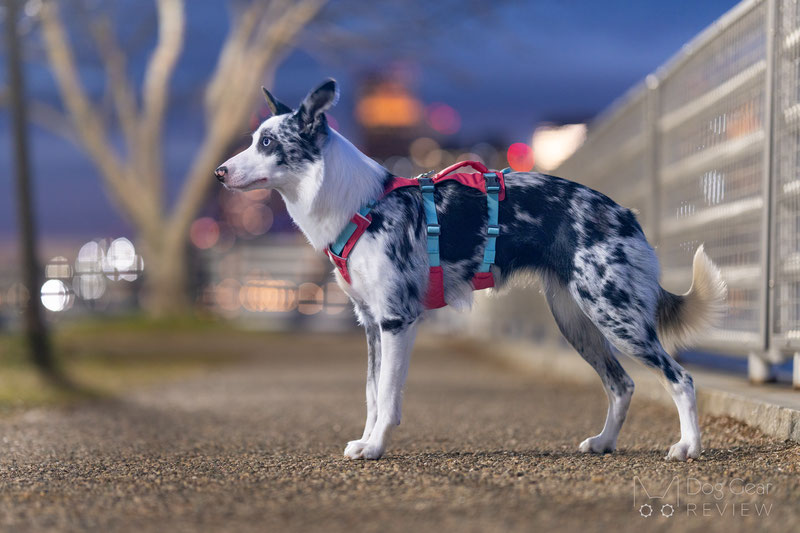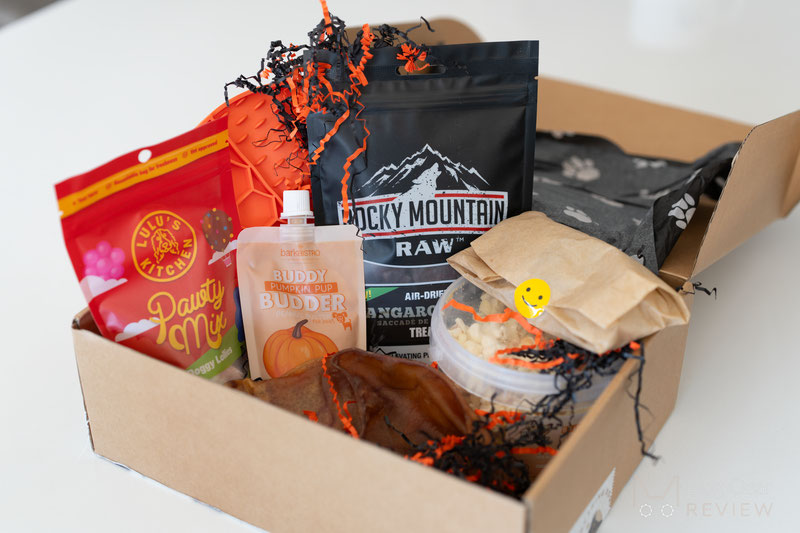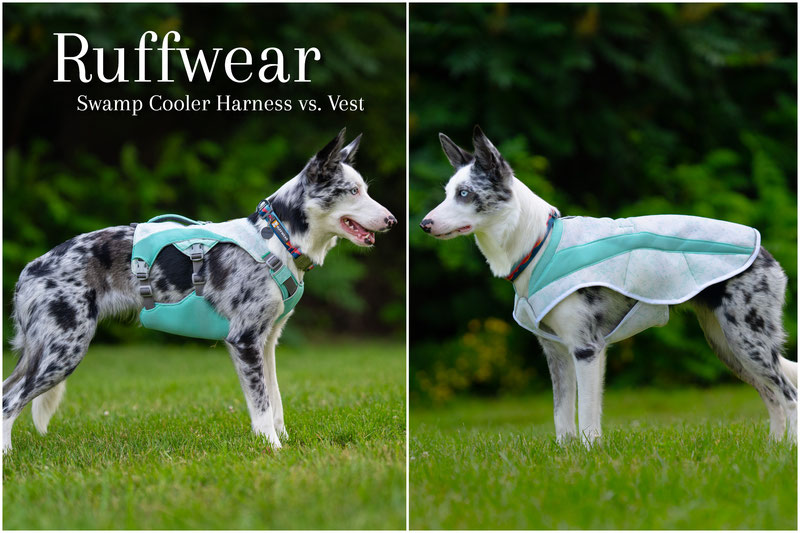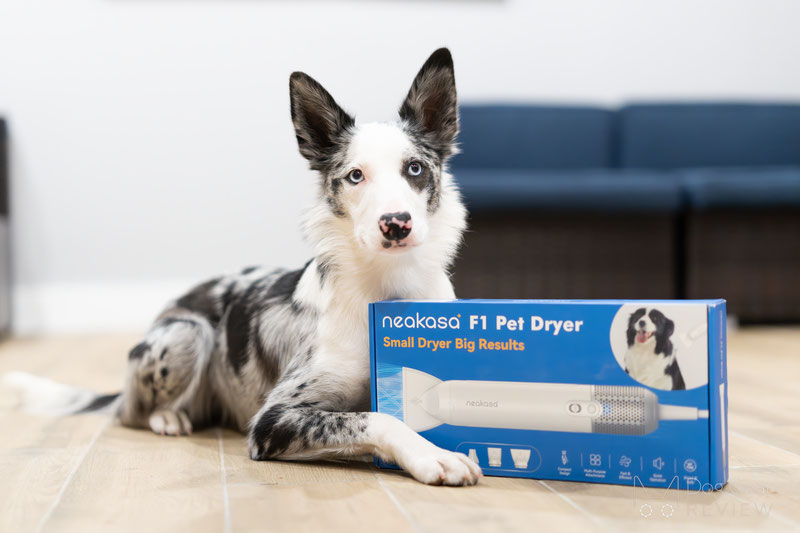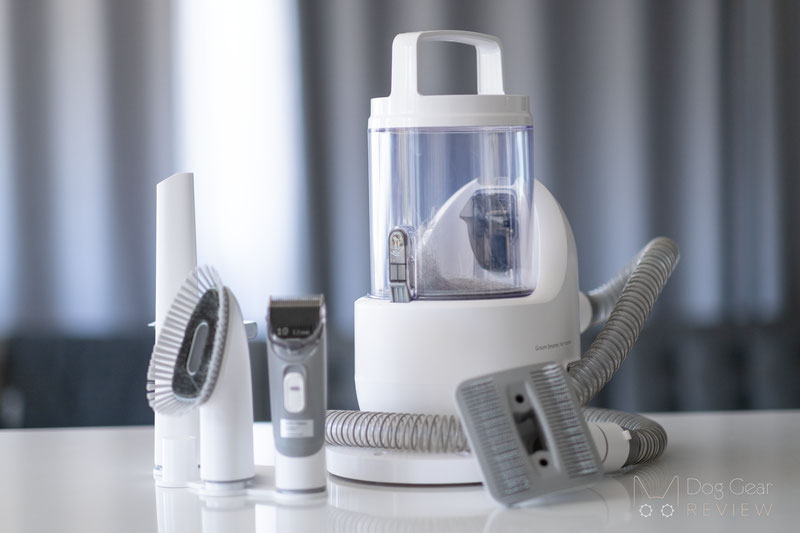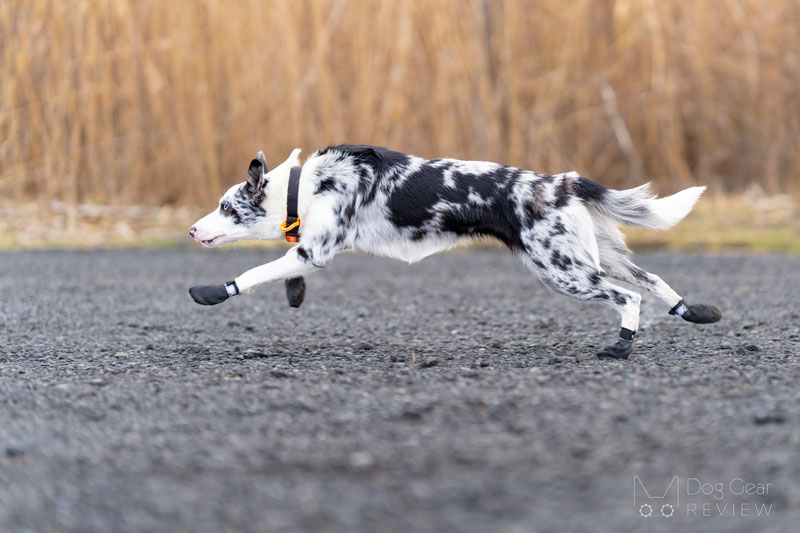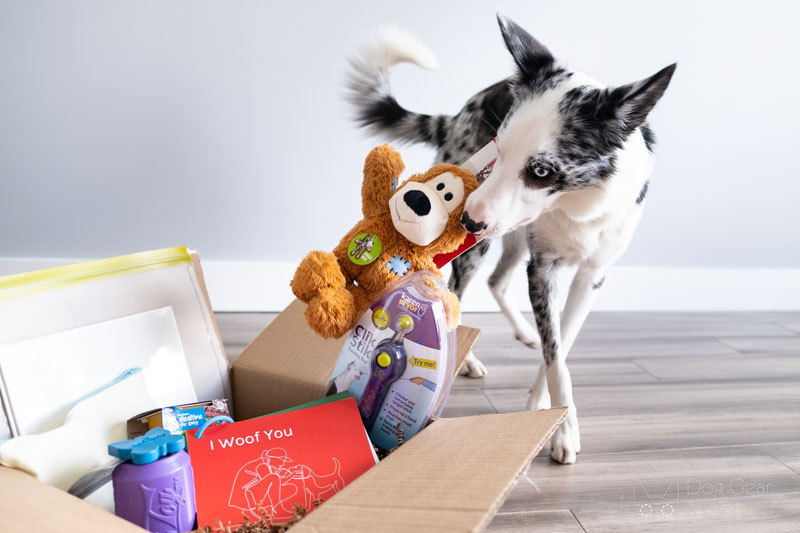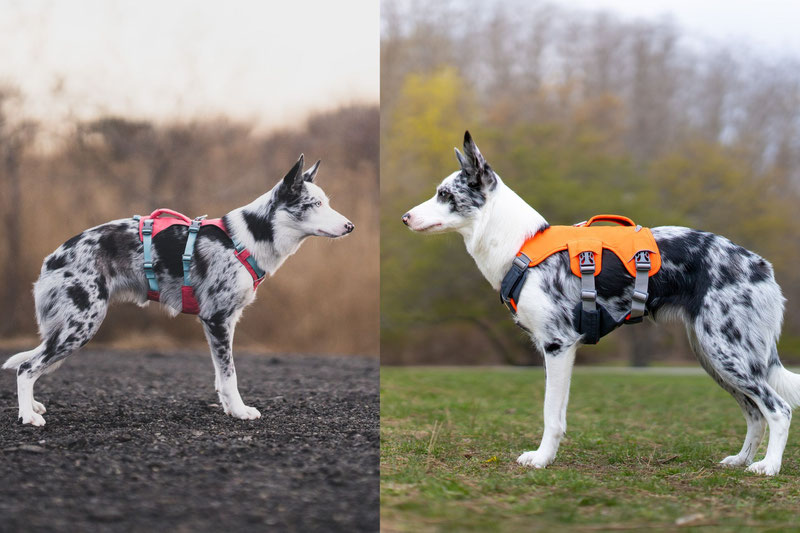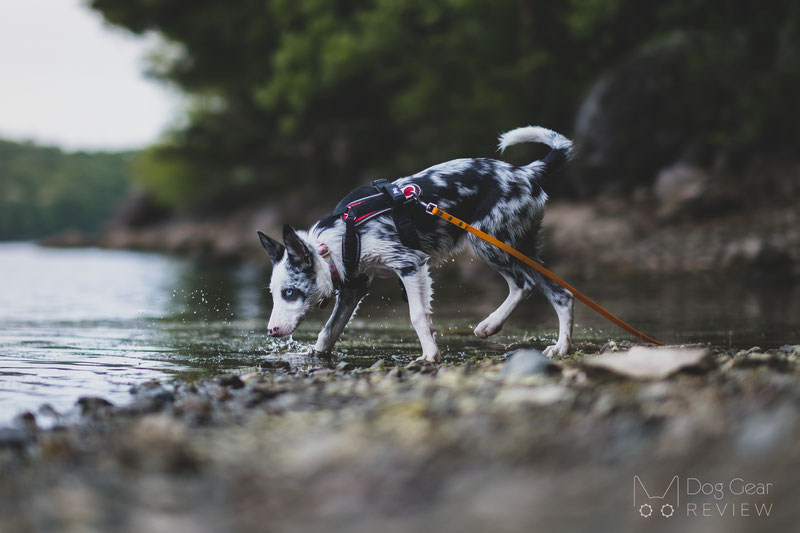Choosing the right harness for our dogs is essential to ensure their comfort, safety, and freedom of movement during walks and adventures. Harnesses come in various designs, but in this article, we’ll focus on the three-strap harness and how it should ideally fit your dog. Finding the perfect fit is crucial, as an ill-fitting harness can cause discomfort or even injury to your pet.
The Basics of the Correct Harness Fit
Before diving into the specifics of how a three-strap harness should fit the dog, let’s outline a few general considerations for harnesses:
Shoulders: When the dog pulls or lunges on the leash, you don’t want the neck-straps covering the shoulder joints or sitting too high and putting pressure on the lower neck. A well-fitted harness should avoid these areas.
Chest Bone: The middle connection point of the Y or H-shaped harness should align with the chest bone, the prominent bone you can feel on the dog’s chest. This ensures an ideal pressure distribution on the chest if the dog pulls into the harness.
Armpits: Leaving enough room behind the front legs is essential for free leg movement.
Between the Front Legs: The chest piece should not be too wide between the front legs to prevent chafing and discomfort on the inside of the front legs.
If you want to read more about these guidelines, we have an in-depth article with more details on how to fit a Y-harness with many images to show examples of good and bad fit in each area.
With these general guidelines in mind, let’s dive into how a three-strap harness should fit a dog.
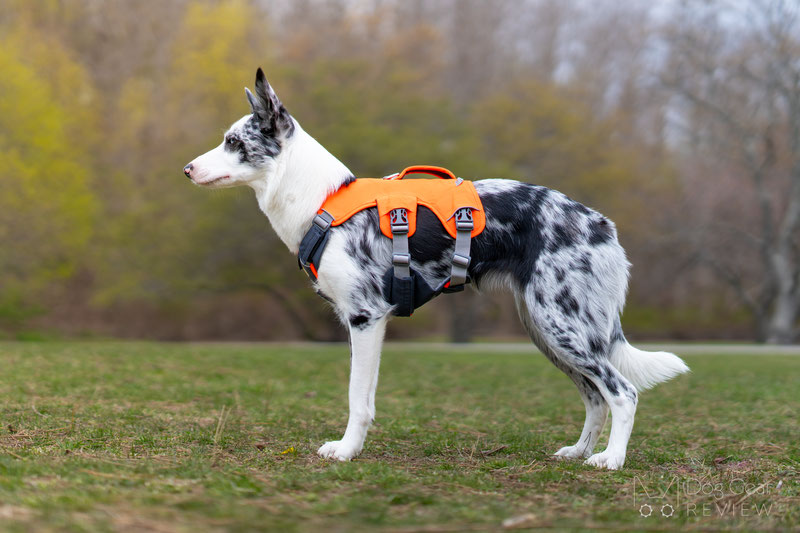
How to Fit a Three-Strap Dog Harness (also called 3-point harness)
The first and second straps on a three-strap harness should fit around the dog’s neck similarly to a short (Y-)harness. When adjusting these straps, ensure they don’t constrict the dog’s shoulder movement, put pressure on the lower neck, or cut into the armpits. It’s crucial to strike a balance between a comfortable and safe fit.
Now, let’s talk about that last strap on a three-strap harness that is usually located around the dog’s abdomen or at the very end of the ribcage.
This strap can be added for two reasons: to distribute the weight better when the dog pulls or when lifting the dog (but these are still not emergency carry harnesses!) or to prevent anxious dogs from slipping out of the harness. These two scenarios require a different position from that third strap.
In the first use case, you want to add more support and, ideally, padding to the bottom of the harness to distribute the pressure/weight better. In this case, you do not want the last strap to be behind the ribcage (over the soft tissue of the stomach), so their weight is distributed around the ribcage. It’s important to remember that this would still allow a deep-chested, anxious dog to back out of the harness - although it is harder than with a short harness.
If the third strap is still over the ribcage, you can use the same guideline to adjust it that you use for the first strap and fit 2-3 fingers for a medium-sized dog.

If you have an anxious dog who backs out of harnesses and there is a risk that they run away when scared, having the last strap over the narrowest point of the dog’s body can be a lifesaver. This is the most visible and easiest to understand when you see it on a dog with a deep chest and narrow waist (like a greyhound). However, Zulu’s structure also shows how the last strap would make it impossible for the dog to back out of the harness and slip it even though, in this case, the third strap has room for 4-5 of my fingers and is not tight at all.
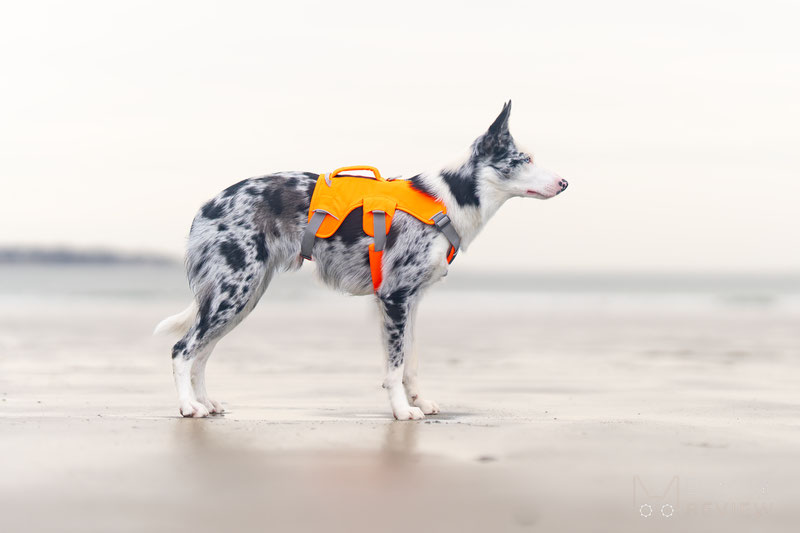
Ideally, you want this last strap around their waist to be loose as the harness will be pulled forward during vigorous activities like running, playing, or even rolling around. A too-tight strap around the abdomen can cause discomfort and even injuries, especially if a dog is lunging on a leash with the attachment point being far back on the harness, putting that sudden pressure on the stomach.
For medium-sized dogs, you want to fit 3-4 fingers or maybe even your palm for this last strap - depending on your dog’s build, body shape, and the position of the strap. This rule is hard to scale for large or tiny dogs, so it is important to evaluate the fit of your dog and readjust the straps as needed.
We talked a bit more about this when comparing the fit of the Ruffwear Web Master Harness with the Flagline and showed how the addition of the Brush guard can significantly change the fit of the Webmaster harness.
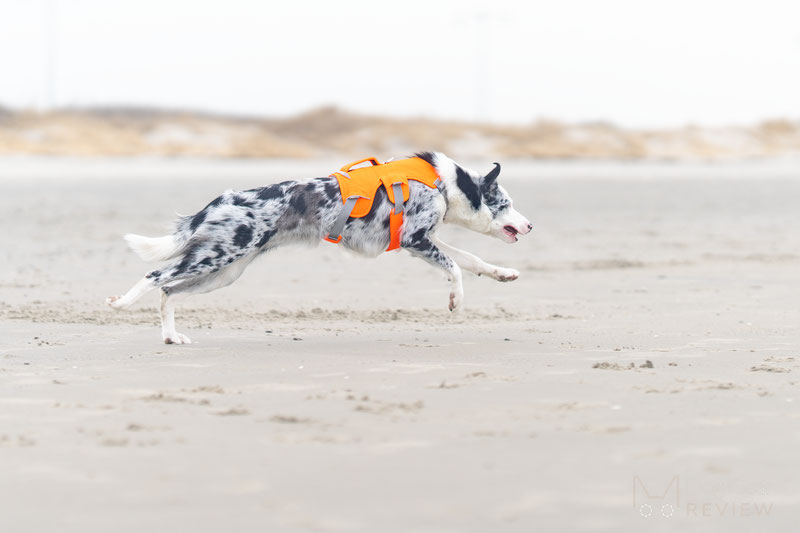
Ruffwear Webmaster Harness
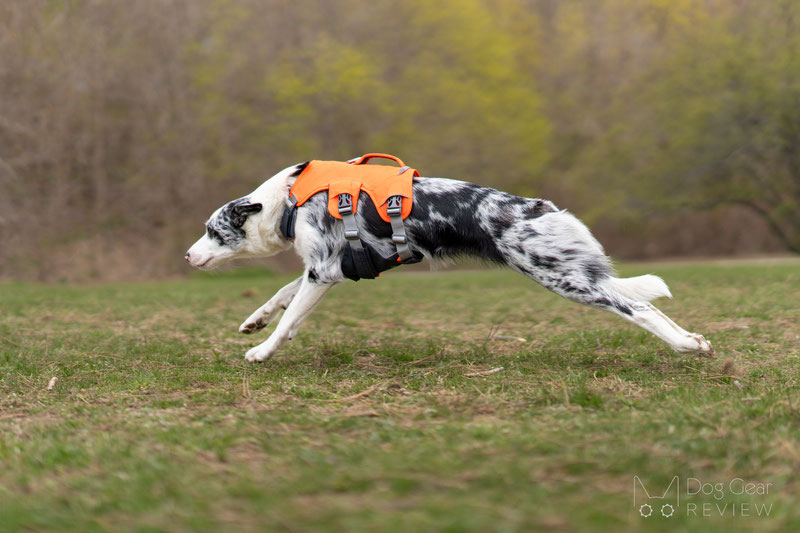
Ruffwear Webmaster with BrushGuard
Summary
It’s important to weigh the pros and cons with your use case in mind when evaluating the adjustment and position of a three-strap harness.
Just like with other harnesses, factors such as the shoulders, chest bone, armpits, and space between the front legs play a vital role in ensuring your dog’s comfort and safety. However, special attention must be given to the last strap when dealing with a three-strap harness.
Much like using any tool, fitting a three-strap harness involves considering various risks and benefits. Positioning the last strap behind the ribcage can pose potential issues for dogs that tend to lunge, pull on the leash, or get lifted frequently. On the other hand, it can be a lifesaver for timid dogs prone to backing out of their harnesses and running away when spooked.
Ultimately, the key is understanding all these factors and balancing the risks and benefits that best suit your dog’s unique needs.
For more in-depth guidance on how to fit a harness, refer to our comprehensive article on the topic. If you are interested in reading more, check out our reviews or browse our other articles! :)
